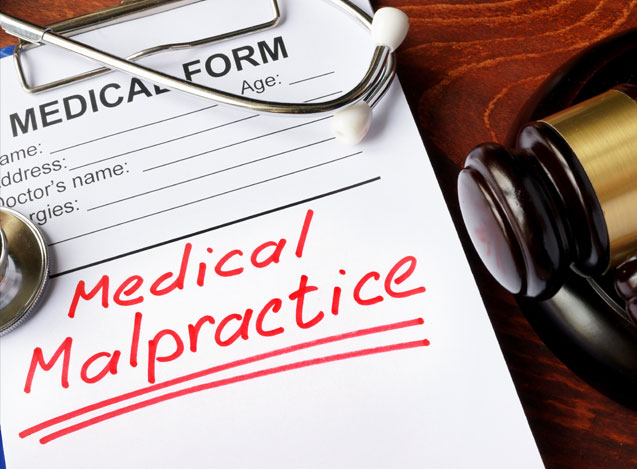Medical malpractice is part of civil law. It includes personal injury or death to a person who consulted with a medical professional or a health facility for diagnosis or treatment of a known or unknown condition. Medical malpractice is an allegation against the doctor, nurse, other medical staff, or a healthcare clinic or hospital that the way that they provided treatment to the patient caused personal injury or death. A common question that many people have after finding out that they received a wrong diagnosis is whether they have a claim against the facility or the professional for medical malpractice.
What Is the Legal Standard for Medical Malpractice?
It’s understandable that people become upset when their treatment doesn’t go as planned. Maybe there was an incorrect diagnosis. Perhaps a medical procedure didn’t go as planned and resulted in an injury. We all go to medical professionals and expect that we’re getting care from people who know what they’re doing.
However, there is a legal standard for medical malpractice. Medical malpractice is more than just an incorrect diagnosis (which is the most common reason people wonder if they have a medical malpractice claim). Medical malpractice means that professional negligence has occurred. It means that the doctor, nurse, or other healthcare professional did not follow current accepted practices for the symptoms or condition presented by the patient. Medical malpractice occurs if the patient is given substandard care and that substandard care must result in harm, injury, or death.
On its own, a misdiagnosis won’t necessarily meet the legal standard of medical malpractice. Doctors and nurses can and do make mistakes. What determines medical malpractice is if they did not use the current accepted guidelines and the patient is harmed in some way or dies.
Other Requirements Needs for a Medical Malpractice Claim
Now that you understand the legal standard of medical malpractice, you’re going to learn about the other requirements that must be met in order for you to have a valid medical malpractice claim.
There must be a doctor-patient relationship. This is one of the most important requirements for determining if you have a claim for medical malpractice. You must have hired the healthcare professional or facility. Additionally, the healthcare professional or facility must have agreed to provide care for you. For instance, if you pay $45 for a visit with a virtual doctor through a healthcare app, you’ve paid them and they’ve agreed to provide you with healthcare. If, however, they refund your money and tell you to go to urgent care or the emergency room, there is no doctor-patient relationship. If you go to an urgent care facility and pay to see a doctor, the doctor could either treat you or refer you to the emergency room. Treating you would likely establish the doctor-patient relationship. If your money were refunded and you were instructed to go to an emergency room, there would be no doctor-patient relationship. As you can see, the basics of contract law must be present: you must offer consideration (money) for treatment and they must accept it before a legal relationship is created.
The healthcare professional was negligent. In order to have a valid medical malpractice claim, the healthcare professional must have acted in a negligent manner. As explained earlier, this means that the healthcare professional did not follow current standard diagnosis or treatment protocols during your care. You must be able to prove that the negligence of the doctor somehow caused you harm. It is standard in medical malpractice cases for both the plaintiff and the defendant to use expert witnesses who discuss the current standards for reasonable medical care.
You have an actual injury from the negligence. It is simply not enough to be unhappy with the care you received. It is often not enough to receive a misdiagnosis. The negligence of the healthcare provider must cause an actual injury to you in some way. One common example can be seen in cases of hypoxia during birth. Many babies are born with cerebral palsy that develops as a result of hypoxia. Sometimes, this occurs because doctors and nurses do not check fetal alarms as often as is prudent to know if the baby is in distress. In that instance, it may be argued that the child developed an actual injury (hypoxia and cerebral palsy) as a result of the negligence of the labor and delivery staff. It’s also important to point out that not every child born with cerebral palsy experienced a birth injury like hypoxia.
There are actual damages that can be paid. An injury on its own may not be enough to sustain a valid medical malpractice claim. The injury that you suffered must have caused you monetary damage in some way. This could be time off work, medical bills, the need for additional medical care, medications, therapies, and more.
Timeliness Is Also Key
If you believe that you may have a medical malpractice claim, you should contact a medical malpractice attorney right away to have your case evaluated. Timeliness is key when it comes to your case. Most states have a statute of limitations for medical malpractice between six months and two years. If you wait too long, you may not be able to bring suit.

